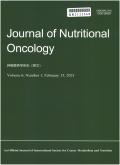More Cycles of Intravenous Chemotherapy are Associated with Reduced Growth in Children with Retinoblastoma
引用次数: 0
Abstract
Abstract: Background Chemotherapy can have a negative impact on the growth of children with different cancers. However, few studies have examined whether intravenous chemotherapy (IVC) affects the growth of children with retinoblastoma (RB). The present study evaluated the height differences (actual height compared to the agestandardized value) and survival of pediatric RB patients treated with IVC. Methods This was an observational cohort study. A total of 87 pediatric RB patients were included. The study population was stratified into two groups based on the number of chemotherapy cycles administered (≤ 4 versus > 4). The height at baseline (before IVC), height after IVC and overall survival were compared between the two groups. Results Before IVC, no height differences were observed between the two groups (P = 0.585). After IVC, all of the patients had a reduced height compared to the agestandardized height (P = 0.035). Patients who underwent more cycles of chemotherapy had a greater height difference compared to those who received fewer cycles (P = 0.008). For those who had reduced height, the difference was positively associated with the number of chemotherapy cycles (r = 0.279, P = 0.043). Among the patients who exhibited a greater height difference, those who underwent more than four cycles of chemotherapy had a decreased overall survival (P = 0.042). Conclusions Pediatric RB patients who underwent more cycles of chemotherapy were more likely to have a reduced height. Further studies are needed to determine the optimal treatment strategy to prevent the reduced growth while maintaining the benefits of chemotherapy.更多的静脉化疗周期与视网膜母细胞瘤儿童生长减慢有关
摘要:化疗可对不同癌症患儿的生长发育产生负面影响。然而,很少有研究探讨静脉化疗(IVC)是否影响视网膜母细胞瘤(RB)儿童的生长。本研究评估了儿童RB患者接受IVC治疗的身高差异(实际身高与年龄标准化值的比较)和生存率。方法采用观察性队列研究。共纳入87例小儿RB患者。根据化疗周期数将研究人群分为两组(≤4 vs . bb0 4)。比较两组患者IVC前基线身高、IVC后身高和总生存期。结果IVC前,两组患者身高差异无统计学意义(P = 0.585)。IVC后,所有患者的身高均低于年龄标准化身高(P = 0.035)。接受化疗周期较多的患者与接受化疗周期较少的患者相比,身高差异较大(P = 0.008)。对于那些身高降低的人来说,这种差异与化疗周期的次数呈正相关(r = 0.279, P = 0.043)。在身高差异较大的患者中,化疗周期超过4个周期的患者总生存期降低(P = 0.042)。结论:接受更多化疗周期的儿童RB患者更容易出现身高下降。需要进一步的研究来确定最佳的治疗策略,以防止生长减少,同时保持化疗的益处。
本文章由计算机程序翻译,如有差异,请以英文原文为准。
求助全文
约1分钟内获得全文
求助全文

 求助内容:
求助内容: 应助结果提醒方式:
应助结果提醒方式:


